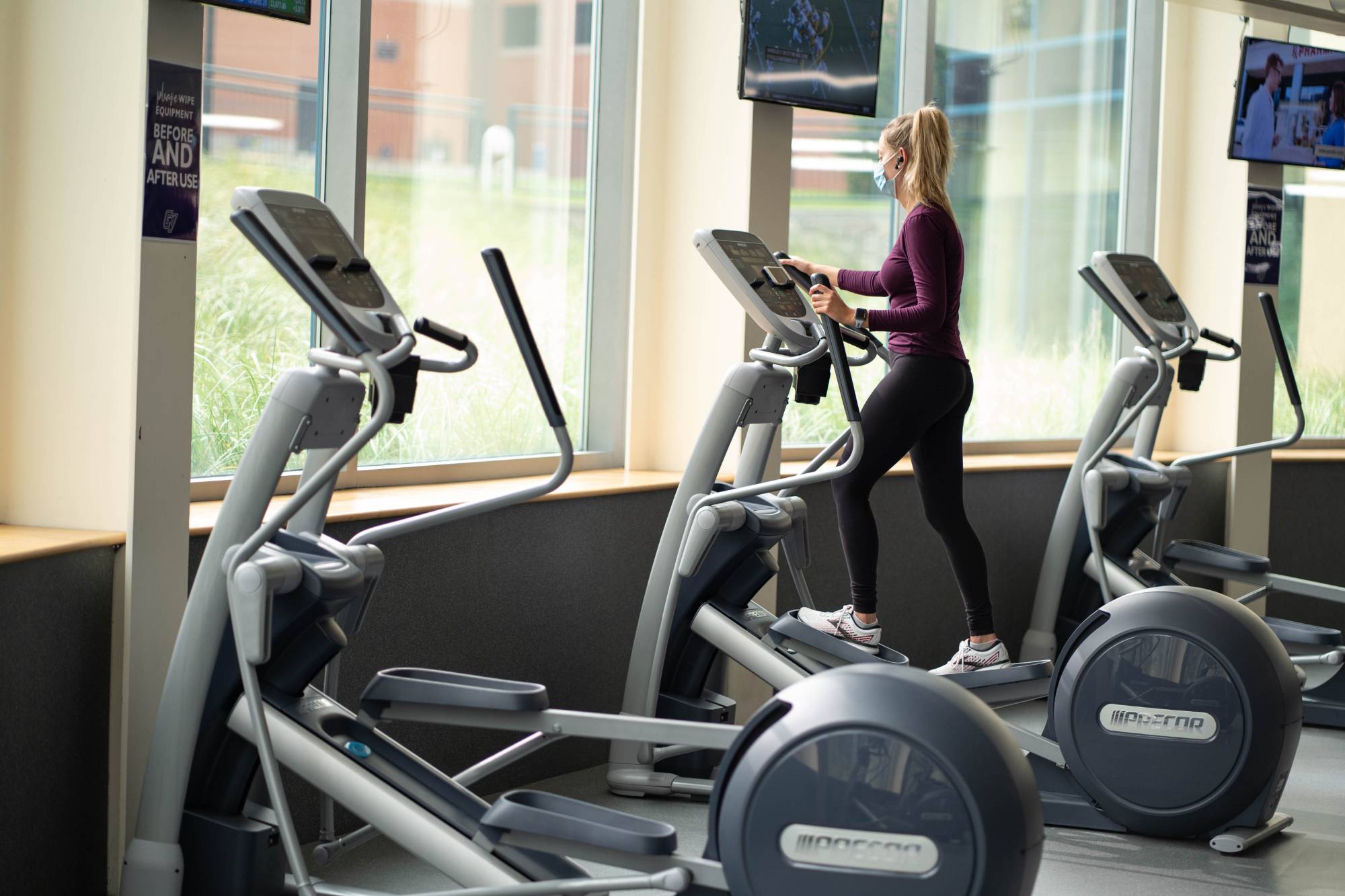Blog
Permanent link for Exercising with a Face Covering on November 2, 2020
The best face coverings for exercise should keep you safe, comfortable and dry, while being flexible enough to bend and move without falling off during your workout. Stay safe and comfortable while you break a sweat.
Why do I need to wear a face covering while exercising?
The Center
for Disease Control and Prevention (CDC) recommends wearing a
face covering as a simple barrier to help prevent respiratory droplets
from traveling into the air and onto other people when the person
wearing the face covering coughs, sneezes, talks, or raises their
voice. This is called source control. The use of face coverings is
even more important in an environment such as the Recreation Center,
where individuals increase their respiratory rate (heavier
breathing). The heavier an individual is breathing, the further their
respiratory droplets can potentially spread.
Is it safe to exercise with a face covering on?
Yes; it's safe to wear a face covering while exercising, but
considerations and precautions should be made. It’s recommended that
you perform low- to moderate-intensity exercise rather than vigorous
exercise while wearing a face covering. This is because of the
decreased airflow allowed through the face covering which is caused by
an increase in inhalation and exhalation resistance. This decrease in
air flow can make it more difficult to catch your breath and impact
your ability to properly regulate body temperature. A study published
in the International Journal of Environmental Research and Public
Health concluded that the increase in inhalation and exhalation
resistance has a very minor impact on the body’s physiological ability
to effectively achieve respiratory ventilation (less than 3% during
low to moderate physical activity). In other words, exercising with a
face covering is safe, though you may experience some slight discomfort.
Selecting and Wearing a Face Covering while Exercising
Look for face coverings with two or more layers that are made
from lightweight, moisture-wicking materials that will keep your face
dry and comfortable. Since you’ll be moving, select a face covering
that has a bit of stretch to it to ensure that it moves with you and
doesn’t slide down during your workout.
Your face covering should be comfortable and snug around your cheeks and nose, and large enough to cover your nose and mouth. Test and adjust the fit prior to exercising. If your face covering is uncomfortable, or makes breathing difficult prior to exercising, chances are it will continue to be uncomfortable and hard to breathe in during your workout.
Tips
- Check to ensure your face covering fits properly, covers your mouth and nose, and is secure so it doesn’t slide down or move during your workout.
- Take a moderated approach to exercise intensity. Face coverings may increase perceived effort and decrease performance during your workout.
- If you tend to sweat a lot when you exercise, bring an extra face covering with you to replace the damp one.
- If possible, have a few face coverings that you use specifically for exercise. This will help ensure you have a clean face covering available each time you plan to exercise.
- Be cautious and err on the side of caution. While exercising with a face covering, some may experience side effects including dizziness, light-headedness, and shortness of breath. If these symptoms occur, stop exercising.
- Change your mindset. Be grateful that the recreation center is open for you to utilize. Wearing a face covering is a small inconvenience compared to not being able to access the facility.
Lastly, wash your hands with soap and water, or use an alcohol-based hand sanitizer that contains at least 60% alcohol prior to putting on your face covering. Avoid touching your eyes, nose or mouth when removing your face covering, and wash your hands afterwards. While exercising, your face covering should be viewed as a barrier, and not an impenetrable shield. Therefore, continue to follow safe social-distancing practices, regular hand washing, and other sanitation measures, such as thoroughly wiping down equipment before and after use.
By: Becca Guilford and John Offerman
Considerations for Wearing Face Coverings:
- Slow the spread of COVID-19. (2020, August 7). National Center for Immunization and Respiratory Diseases (NCIRD), Division of Viral Diseases. Retrieved from https://www.cdc.gov/coronavirus/2019-ncov/prevent-getting-sick/cloth-face-cover-guidance.html
- Roberge, R. J., Kim, J.-H., & Benson, S. M. (2012). Absence of consequential changes in physiological, thermal and subjective responses from wearing a surgical mask. Respiratory Physiology & Neurobiology, 181, 29-35.
- Scheid, J. L., Lupien, S. P., Ford, G. S., & West, S. L. (2020). Commentary: physiological and psychological impact of face mask usage during the COVID-19 pandemic. International Journal of Environmental Research and Public Health, 17, 3-4.
Categories:
Fitness
General Wellness
Posted
on
Permanent link for Exercising with a Face Covering on November 2, 2020.


